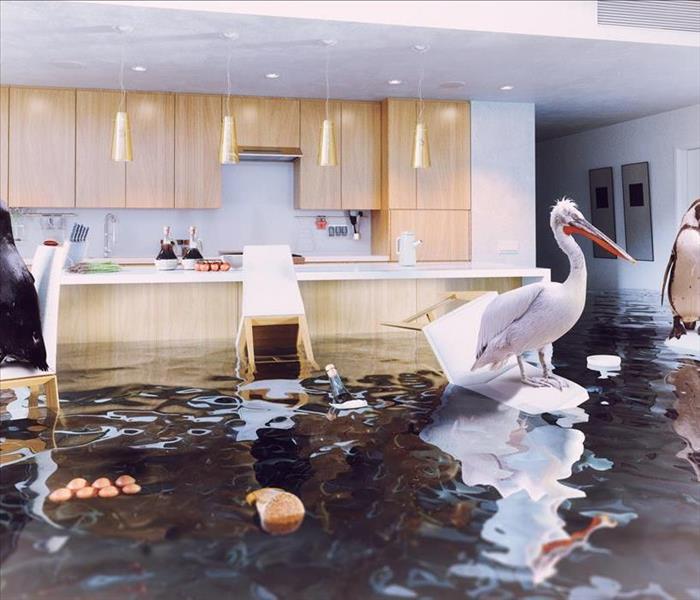How To Safely Clean Up After a Water Intrusion
4/27/2021 (Permalink)
If you discover floodwaters penetrating your home in Washington, NC, you will have to take immediate action. First, it's important to know the proper cleanup method for each of the three levels of contaminated water. Cleaning up water from an overflowing river would probably necessitate many more safety precautions than cleaning water from a bursting supply line in your home.
1. "Clean" Water
Clean water (aka Category 1 or white water) comes from a relatively sanitary source. This means it's safe to touch without protective gear. Just because the water is clean doesn't mean you can ignore it, though. Within 48 hours, white water can develop into gray water. Mold is also likely to begin growing during this time.
2. Somewhat Contaminated Water
Gray water (aka Category 2) is not thought of as highly contaminated water. However, it does come from an unsanitary source. Water from a clothes washing machine or an aquarium could be considered gray water. This water is known to have bacterial and/or chemical contaminants. You should wear rubber gloves throughout the cleaning process. It's critical to clean and sanitize the area thoroughly before it has time to develop into something more toxic (i.e., within the next 48 hours).
3. Highly Contaminated Water
Black water (aka Category 3) is heavily polluted. It's likely to be highly unsanitary due to biohazards like fecal matter or blood. It could also contain dangerous chemicals or an unknown array of contaminants. You'll definitely want to hire water damage restoration professionals to ensure that the proper cleanup techniques are used for the well-being of your family and home.
Even the cleanest water can cause severe damage to most household materials, as well as the structure itself. Knowing that it is contaminated water adds another important factor to the restoration process. Before you begin the remediation process, it's essential to determine the level of contamination.






 24/7 Emergency Service
24/7 Emergency Service
